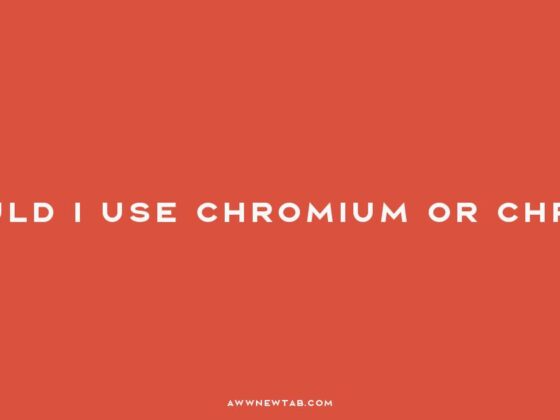How Can I Prevent Chrome from Automatically Loading Extensions? – Are you tired of Chrome extensions slowing down your browsing experience? Do you find yourself constantly bombarded by unwanted pop-ups? If so, you’re not alone. Chrome extensions can be both a blessing and a curse, enhancing functionality while also causing frustration. But fear not! In this guide, we’ll show you how to take control of your Chrome browser by stopping it from loading extensions. Say goodbye to the clutter and hello to a smoother, faster browsing experience. So sit back, relax, and let’s dive into the world of extension management.
Understanding Chrome Extensions and Their Impact on Browsing Experience
Chrome extensions are small software programs that customize the browsing experience. They enable users to tailor Chrome functionality and behavior to individual needs or preferences. However, there can be instances where these extensions cause performance issues, conflicts, or security concerns. In such cases, managing how Chrome loads these extensions becomes crucial for maintaining a smooth browsing experience.
Why Manage Chrome Extensions?
Before delving into the how-tos of managing Chrome extensions, it’s essential to understand the reasons behind it. Extensions, while useful, can sometimes:
- Slow down browser performance by consuming system resources
- Cause security vulnerabilities if they are malicious or compromised
- Lead to privacy concerns by tracking user data
- Interfere with webpage loading and display through pop-ups and overlays
Thus, having control over these extensions is not just about preference, but also about ensuring a secure and efficient browsing environment.
Blocking Unwanted Pop-Ups in Chrome
Pop-ups can be a significant nuisance when browsing online. They can also be a vector for malicious software if they come from untrusted sources. To enhance user safety and reduce distractions, Chrome includes a setting to block pop-ups.
How to Enable the “Block Pop-ups” Option in Chrome
Follow these steps to prevent pop-ups, which may also include prompts from extensions:
- Open your Chrome browser.
- Enter chrome://settings/content/popups into the address bar.
- Toggle the setting to “Block pop-ups” to prevent pop-up extensions from appearing.
This setting helps to maintain focus while browsing and minimizes the risk of clicking on potentially harmful pop-ups.
Managing Individual Chrome Extensions
Sometimes, it’s not all extensions that cause problems but specific ones. Chrome provides an easy way to manage individual extensions without affecting others.
Enabling or Disabling Chrome Extensions
To control individual extensions:
- Launch Chrome and click on the three-dot menu icon.
- Select “More tools” and then “Extensions” to open the “Manage extensions” page. Alternatively, you can type chrome://extensions/ into the address bar.
- Here, you’ll see a list of all installed extensions. Toggle each extension on or off as needed.
This method allows you to troubleshoot which extensions may be affecting your browser’s performance or causing other issues.
Blocking Extensions on a Chrome Website
For administrators who manage multiple users or devices, the Google Admin console offers a way to centrally control the extensions that can be installed on Chrome within their organization.
Setting Up Extension Controls in Google Admin Console
Here’s how to block or allow certain types of extensions:
- Access the Google Admin console (admin.google.com).
- Navigate to Devices then Chrome.
- Go to Apps and extensions and then Users and browsers.
- Select Allow/block mode, click Edit, and then choose the types of apps and extensions to let users install.
This centralized approach ensures consistency in extension management across the organization, enhancing security and compliance.
Optimizing Chrome’s Performance with Lazy Loading
Lazy loading is a technique that defers the loading of non-critical resources at page load time, and instead loads them as needed when they’re about to enter the viewport. This can significantly speed up initial page loads and save data usage.
Enabling or Disabling Lazy Loading in Chrome
For users who want to control lazy loading behavior:
- Type chrome://flags into the Chrome address bar.
- Search for disable-lazy-image-loading and disable-lazy-frame-loading.
- Enable or disable these options according to your preference.
Additionally, for a comprehensive list of all accessible settings and experiments, type chrome://chrome-urls into the address bar.
This advanced control can help power users and developers optimize Chrome for their specific use cases.
Conclusion and Best Practices for Extension Management
Managing Chrome extensions effectively ensures that you have a browser tailored to your needs while maintaining performance and security. By utilizing the built-in settings of Chrome and the Google Admin console, users can exercise granular control over their browsing experience.
Best Practices for Extension Management
- Regularly review and audit installed extensions.
- Disable or remove any extensions that are not frequently used.
- Keep extensions updated to benefit from the latest features and security improvements.
- Use the Google Admin console for centralized management if managing multiple users or devices.
- Stay informed about the extensions’ permissions and the data they can access.
By following these steps and best practices, users can enjoy a customized, efficient, and secure browsing experience with Chrome.
FAQ & Related Questions about How Do I Stop Chrome From Loading Extensions?
Q: How can I stop Chrome from lazy loading extensions?
A: To stop Chrome from lazy loading extensions, you can enable/disable lazy loading in the dedicated interface accessible within the browser. Type chrome://flags in the address bar and search for “disable-lazy-image-loading” and “disable-lazy-frame-loading”. For all accessible settings, type chrome://chrome-urls.
Q: How do I prevent Chrome from loading extensions?
A: To prevent Chrome from loading extensions, you can change your Chrome settings. Go to chrome://settings/content/popups and enable the “Block pop-ups” option. This will help prevent pop-up extensions from loading.
Q: How can I block extensions on my Chrome website?
A: To block extensions on your Chrome website, follow these steps:
1. Go to your Google Admin console.
2. Navigate to Devices > Chrome.
3. Open Chrome and click the three-dot icon in the top-right corner.
4. Select Extensions, then click Manage Extensions.
5. Click Remove to remove Chrome extensions or Chrome apps you don’t want, then click Remove again to confirm the removal.


